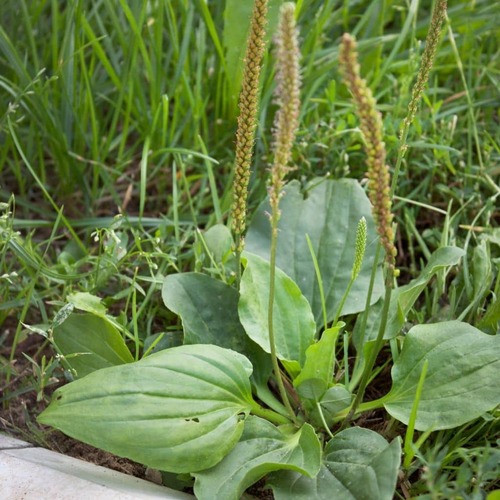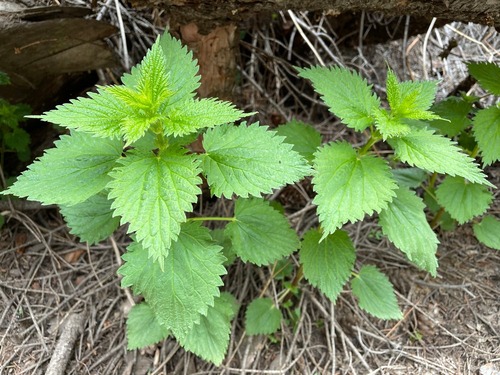Weeds often get a bad reputation for invading our gardens and taking over our flower beds, but many of them are surprisingly nutritious and tasty. In fact, some of these so-called “weeds” are packed with vitamins, minerals, and other beneficial compounds that make them a great addition to your kitchen. What’s more, they’re easy to find, require little maintenance, and can add flavor and diversity to your meals.
By turning weeds into culinary delights, you can make the most of what nature provides right outside your door. And here are 10 edible weeds that you can easily find in your garden!
1. Dandelion (Taraxacum officinale)

Dandelions (Taraxacum officinale) are perhaps the most well-known edible weed, often targeted for removal by gardeners despite being a nutritional powerhouse. Identified by their bright yellow flowers, jagged-edged leaves growing in a rosette pattern close to the ground, and fluffy seed heads that disperse in the wind, dandelions are versatile in the kitchen.
Young dandelion leaves, with a slightly bitter, peppery flavor, can be added to salads or sautéd, while the yellow flowers can be used in teas, wine, or as a garnish in salads. The roots, when dried and roasted, serve as a caffeine-free coffee alternative. Rich in vitamins A, C, and K, dandelions also offer significant amounts of calcium and iron, making them a valuable addition to your diet.
2. Purslane (Portulaca oleracea)

Often overlooked as a simple garden weed, purslane is actually a nutritional powerhouse, particularly known for its high content of omega-3 fatty acids. It can be identified by its thick, succulent-like leaves, red or pinkish stems, and small yellow flowers that bloom in clusters.
The entire plant is edible, with the leaves and stems offering a slightly sour, lemony flavor and a crunchy texture. Purslane is versatile in the kitchen, making a great addition to salads, soups, or stir-fries. Rich in vitamins A, C, and E, as well as magnesium and potassium, it is one of the best plant sources of omega-3 fatty acids.
3. Chickweed (Stellaria media)

4. Lamb’s Quarters (Chenopodium album)

Lamb’s quarters, often called “wild spinach,” live up to their name with a flavor and nutritional profile similar to spinach. This plant is identified by its diamond-shaped, light green leaves that have a powdery white coating on the underside, and it typically grows in upright clusters.
The young leaves can be eaten raw in salads or cooked just like spinach, offering a mild, earthy flavor with a slight mineral note. Rich in vitamins A, C, and K, lamb’s quarters also provide high amounts of calcium and iron, making them a nutritious addition to your meals.
5. Plantain (Plantago major)

Not to be confused with the banana-like fruit, plantain is a common garden weed known for its broad, oval leaves and numerous medicinal benefits. It can be identified by its rosette of broad leaves with parallel veins and long, greenish flower spikes.
Young plantain leaves are tender enough to be eaten raw in salads, while older leaves, which are tougher, are best when cooked. The seeds can also be collected and used as a flour substitute or sprinkled on meals as a garnish. Plantain is rich in calcium and contains vitamins A, C, and K, and is valued for its anti-inflammatory and healing properties.
6. Wood Sorrel (Oxalis spp.)

7. Clover (Trifolium spp.)

Clover, often associated with luck, is not only a well-known weed but also an edible and nutritious plant. It is easily identified by its three-leaf clusters, though some varieties may have four, and its small, round flowers, which are usually white or pink.
Both the leaves and flowers can be eaten raw in salads or cooked in soups and stews, while the flowers can also be dried and brewed into tea. Clover is rich in protein and provides a good source of vitamins A and C, with its flowers also believed to have anti-inflammatory properties.
8. Shepherd’s Purse (Capsella bursa-pastoris)

Shepherd’s Purse, named for its triangular seed pods resembling a shepherd’s bag, is a common weed with numerous medicinal and culinary uses. It can be identified by its small white flowers, triangular heart-shaped seed pods, and lobed leaves that resemble those of dandelions.
The leaves, with a slightly peppery flavor similar to mustard greens, can be eaten raw in salads or sautéd. In addition to its culinary versatility, Shepherd’s Purse is known for its ability to help stop bleeding and is a good source of vitamins C and K.
9. Creeping Charlie (Glechoma hederacea)

Creeping Charlie, also known as ground ivy, is a common garden weed recognized for its mildly minty flavor. It can be identified by its round, scalloped leaves and purple-blue flowers that grow in clusters, spreading low to the ground in a creeping manner.
Both the leaves and flowers can be added to salads or brewed into a refreshing herbal tea. Creeping Charlie is a good source of vitamin C and is often valued for its anti-inflammatory and diuretic properties.
10. Nettle (Urtica dioica)

Though often avoided for their stinging hairs, nettles become a delicious and nutrient-rich food source once cooked. This plant can be identified by its jagged, serrated leaves covered in fine stinging hairs and its tall, upright growth.
To safely eat nettles, the leaves should be blanched or cooked to remove the sting, making them a great addition to soups, stews, or as a spinach substitute. Nettles are incredibly nutritious, rich in vitamins A, C, and K, as well as iron, calcium, and protein, making them a valuable plant-based food.
Keep in mind that always ensure you have positively identified a weed and confirmed its safety before consumption. When foraging, avoid areas that may have been treated with pesticides or other chemicals. Although edible weeds are nutritious, some contain compounds that should be consumed in moderation, such as oxalic acid in wood sorrel and purslane.

